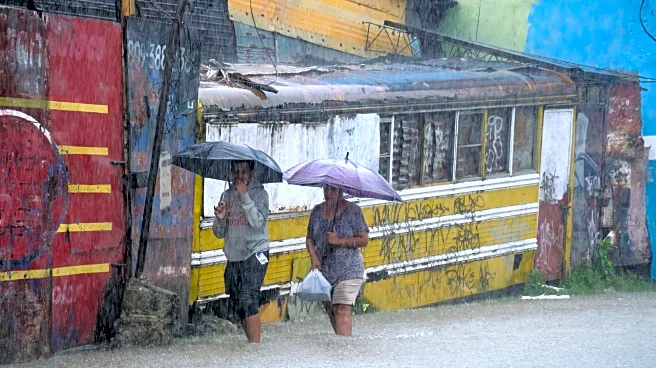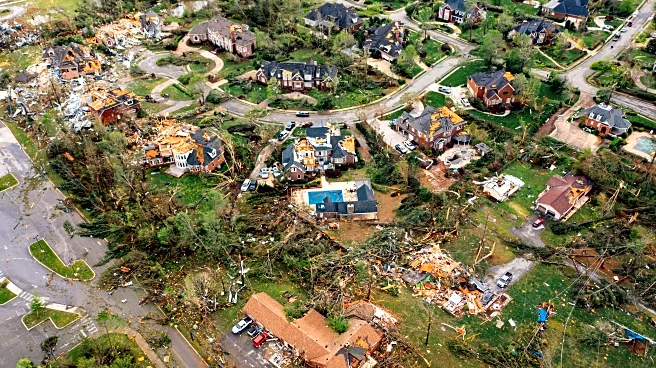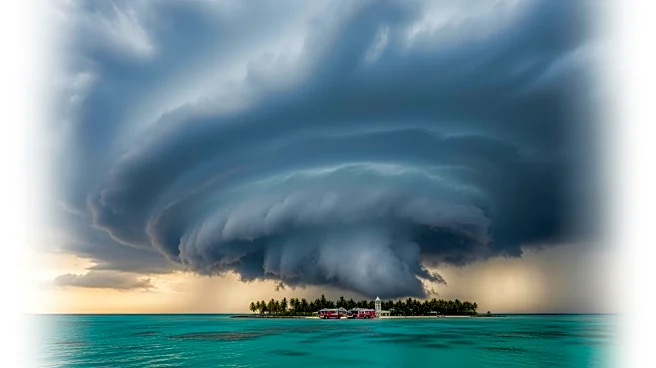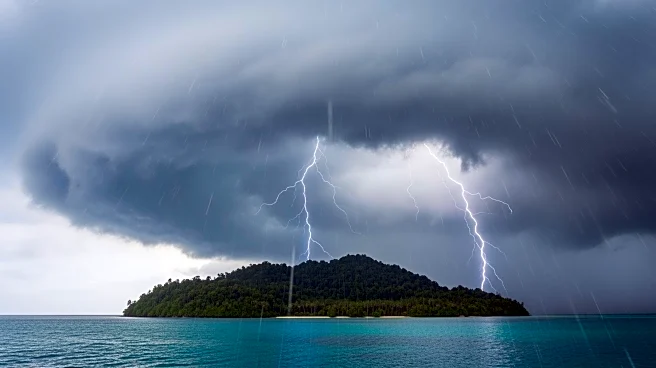What's Happening?
Hurricane Melissa has intensified into a Category 4 storm as it moves northwest through the Caribbean Sea, with Jamaica in its direct path. The National Hurricane Center (NHC) has issued a hurricane warning
for Jamaica and parts of Cuba, indicating that hurricane conditions are expected. As of the latest advisory, Melissa is located approximately 115 miles south of Kingston, Jamaica, with maximum sustained winds of 145 mph. The storm is expected to bring between 15 and 30 inches of rain to southern Hispaniola and Jamaica, with some areas potentially receiving up to 40 inches. This heavy rainfall is likely to result in catastrophic flash flooding and landslides. Dangerous storm surges, surf, and rip currents are also forecasted, with the southern coast of Jamaica expected to experience life-threatening storm surges.
Why It's Important?
The intensification of Hurricane Melissa poses significant risks to Jamaica and surrounding regions, including potential loss of life and extensive property damage. The storm's impact could disrupt infrastructure, leading to long-duration power and communication outages. The economic implications are substantial, as Jamaica's tourism and agriculture sectors may suffer from the storm's aftermath. Additionally, the hurricane's path through the Caribbean highlights the increasing frequency and intensity of such storms, potentially linked to climate change. This situation underscores the need for effective disaster preparedness and response strategies in vulnerable regions.
What's Next?
As Hurricane Melissa approaches Jamaica, authorities have closed all airports and are urging residents to complete preparations and seek shelter. The storm is expected to make landfall in Jamaica by Tuesday morning, with potential further strengthening into a Category 5 hurricane. After impacting Jamaica, Melissa is forecasted to move northward, affecting eastern Cuba and possibly the southeastern Bahamas and Turks and Caicos. The NHC warns of extensive infrastructural damage and isolation of communities, emphasizing the need for continued vigilance and readiness among residents and emergency services.













